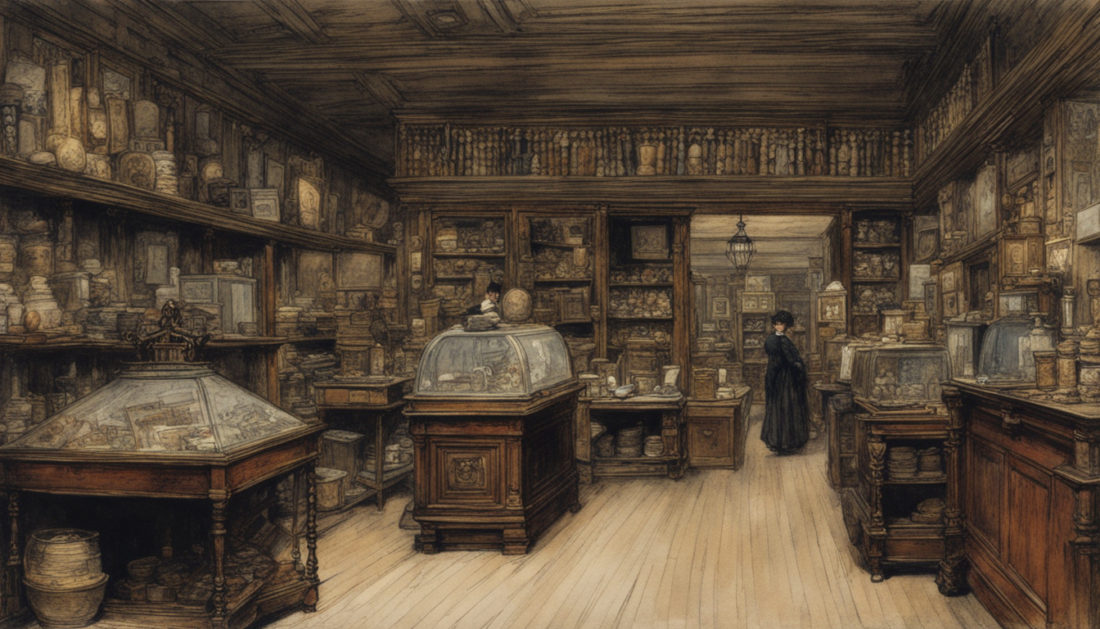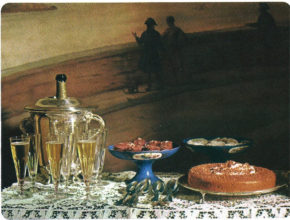I’m not generally inclined to the snobs point of view, but where I do become a little snobby is in the correct naming of things. I find this to be especially problematic on Etsy and Ebay. If you don’t know what something is…. Just say so. Incorrectly naming something can be funny, unless you’re charging an arm and a leg, then it’s fraud. This can also be hazardous. I have seen a shop label an item a “soup tureen”, when the object in question was a chamber pot. I think we all understand why no one wants their soup served out of that particular bowl*.
So, a few things… if it isn’t 100 years old, it isn’t an antique. I’ve seen people try to say 75 years, nope, it’s a full century. Where things get murky is that some Antique dealers, (and collectors) will say age isn’t the only criteria. Many dealers and collectors will only consider hand made goods to be antique. Snobs will say that once you get into machine made goods they must be “masterpieces of design” to be sold as an antique. For me, this eliminates too many truly great objects, though I do think there should be something that makes it special and not just “old”. The less snobby will opine that the object in question should be of note, of beauty or historical importance. I’m inclined to agree with this, but only within reason. Beauty, or historical importance for that matter, are in the eye of the beholder.
Collectibles are not anything that happens to be old – they must be things that significant numbers of people collect. You probably got that from the name. Yes, that is a huge range of stuff, from tins and coins to comic books and stamps, but any old junk isn’t collectable. Even if your uncle loves collecting balls of tinfoil, that doesn’t make tinfoil balls a collectible. There was a time when collectibles were also supposed to be man-made, but in recent years I think this has stopped being a criteria as many items, such as video game consoles and computers are highly collectable and are most certainly not man made.
Vintage is usually reserved for clothes and jewelry, but it has come to describe items of ephemera as well. Vintage has to be at least one generation old, though that makes for a vague description. Most collectors will say Vintage must be at least 40 years old. I generally tend to think an item is vintage if around that much time has passed. Yes, that means that items from 1980’s are vintage. Some collectors won’t consider an item vintage if it isn’t fifty years old, which still makes that old Donna Summers album vintage. If someone tells you that 20 years is vintage, they are a seller and they may be a little shady. Now I know that generations as defined by human groups, (baby boomers, gen x, etc.) are usually around twenty years, but objects are not people. Principally, objects last a lot longer, which means their generations may be defined in longer terms, but don’t worry, all that stuff will become vintage eventually.
One exception is if something is listed as a Vintage Collectible, then it is supposed to be fifty years old. That is a specific term used by dealers and it is widely accepted, so look for the word collectible.
Antiquities are items that date before the Middle Ages. I’ve seen a few antique oil lamps on eBay listed as Antiquities. They are not – if they were I’d be seriously questioning whether or not they were looted, stolen or in need of repatriation.
Finally, what exactly is ephemera? I like the Maurice Rickards definition, “the minor transient documents of everyday life.” Mostly because it’s poetic, not because it’s actually accurate. Ephemera is supposed to be items that were intended for only a single or short-lived use and then thrown away. This includes letters, documents, brochures, photographs, scrapbooks, maps, receipts, sheet music and tickets amongst a host of other paper. It can also include small objects such as medals, ribbons, memorabilia, trinkets, games, tins and advertising. Ephemera can be collectibles, or not. This is probably the hardest to define category and the most often abused. I wish I could be more exact, but the definition of ephemera is, well…. ephemeral.
When you speak with real experts they will often say more accurate terms. Rare, scarce, limited edition… Rare will mean there are only a handful in the world today. Vermeers are rare. Fabergé Eggs are rare. Most things are not. When you see the word rare on eBay or Etsy, don’t believe it. Scarce will indicate objects that are not rare, but are hard to find. Limited editions are meant to force scarcity, but it depends on the number of items made, 1/10 is good, 1/100,000, not so much. Sometimes limited edition collectables can mean something is worthless. Collectable limited edition plates were once popular, now you can’t give them away, (with some notable exceptions). So remember, just because something is scarce does not make it valuable.
I’m only snobby about this stuff because I see a lot of people taking advantage of others on resale sites. When a seller lists something as rare, but it’s not, they’re hoping to take advantage of someone else’s ignorance. When a seller lists a tin as Edwardian, when it is in fact, 1970s, (as I happened to see on Etsy today) I see it as a fraud. If you don’t know, don’t make something up. As a buyer, try to learn as much as you can about what you collect, knowledge is your only protection.
This is my last area of contention. Even with the advent of the internet and you tube, people have a lot of trouble defining eras. I see things listed as Victorian that are Edwardian. Regency for Victorian. Art Nouveau for 60s Art Nouveau revival. Sometimes these are mistakes because eras and styles bleed. Sometimes it’s far more nefarious. When someone lists a costume bracelet as Egyptian Revival and charges three hundred dollars, you might expect that the object is from the 1920s Egyptian Revival after King Tut’s Tomb was discovered, not the 1960’s Egyptian Revival after the film Cleopatra was released, and certainly not the 1970’s Egyptian Revival after King Tut’s artifacts went on tour. Online some of the salient factors can be hidden, (the quality of materials, the weight of the metal, etc.) so that labeling is particularly shady. Learn your eras, they will keep you from being taken advantage of.
Now that we have our terms mostly defined and we’ve properly girded our loins for battle, we can go forth and collect!
*A chamber pot is a bowl that people used to keep under their bed to pee and poop in.



